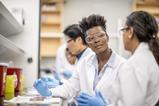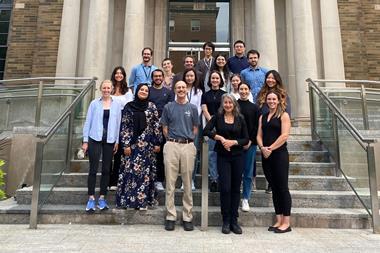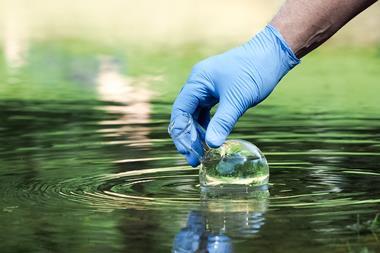Involving the public in research tackling superbugs
As part of the process of preparing for an upcoming surgery, my local hospital not only sent me for some blood tests and a routine electrocardiogram, but also for some swabs. The aim was to determine whether I was carrying some of the best-known antibiotic resistant infections, prior to my admission.
This caution is absolutely warranted. Antimicrobial resistance (AMR) is one of the leading causes of death and health care settings such as hospitals carry an increased risk of infection. Where patients recover from AMR infection, they commonly experience longer hospital stays, more complex interventions and recurrent infection.
Breaking the mould
Tackling AMR is a difficult challenge, particularly as our use/misuse of antibiotics is partly to blame for the emergence of drug resistance in some bacterial strains. Like most ‘wicked problems’ new approaches are required to solve not only the scientific questions raised but importantly to increase awareness of the need for behavioural change in prescribing or taking antimicrobials. In recent years, a number of citizen science projects have emerged, each aiming to connect members of the public to research relating to AMR.
It turns out that crowdsourcing has a rich history in the discovery of antibiotics, even in the case of the first widely available antibiotic, penicillin. After his somewhat serendipitous discovery of the drug, Alexander Fleming struggled to isolate penicillin for around a decade. He knew that obtaining a pure substance was necessary if the medicine stood any chance of clinical use. Rather than giving up hope, however, Fleming sent impure samples of Penicillium mould to anyone who requested it, encouraging recipients to try to purify the desired medicine. The search was also on for different strains of Penicillium mould that yielded higher quantities of penicillin. Eventually, a mouldy cantaloupe melon discovered in a market saved the day; producing six time more penicillin than Fleming’s original strain.
Swabbing for science
Today’s citizen science projects have moved on from isolating penicillin, tending to focus on the identification of newer antimicrobials. One such project, ‘Swab and Send’ encourages participants to swab different places and environments that they suspect will be rich in microbes and to send them in to members of the research team at the University of Liverpool’s School of Tropical Medicine in the UK.
A 2019 paper described participants from over 20 schools and higher education establishments. Collectively the swabs have generated over 700 hits against different infections with ‘over 10,000 isolates stored’ ready for any group who would like to screen this diverse set of compounds ‘should a project with a suitable assay present itself.’
Other citizen-led approaches have focused on looking at soil samples to find potential new medicines. A number of different projects have partnered citizen scientists with research groups to collect and analyse soil samples for the presence of fungi that produce bioactive natural products. Microbes found in soil samples have a long history of producing compounds that act as antimicrobials. Streptomycin, used to treat tuberculosis, was first isolated from a New Jersey soil sample in 1943, and over 80 years later the microbe that produced it was named the official microbe of the state.
Inspecting the infection
Researchers are also seeking help from members of the public to speed up the detection of antimicrobial resistant bacteria. The Infection Inspection citizen science project – launched earlier this year by researchers at the University of Oxford, UK – invites participants to look at images of different types of bacteria that have been treated with antibiotics. The research team have built a machine learning tool to identify bacteria that are sensitive to antibiotics by observing changes in ‘their shape, DNA, and cell wall’ that are indicative of the ability of a medicine to stop them in their tracks.
In order to improve the sensitivity of the tool, the team have collected thousands of images of bacteria treated with antibiotics and invited members of the public to annotate the data and help to identify samples that are tricky to classify. With assistance from citizen scientists, the team aim to develop a clinical tool that could rapidly identify the strains of bacteria contributing to a patient’s infection. If successful this would hopefully mean that patients could be treated with an appropriate medication more quickly and potentially reduce the unnecessary use of broad spectrum antibiotics.
Tackling antimicrobial resistance requires multidisciplinary approaches and increased public awareness. Citizen science is a powerful way to engage the public in research to expedite the discovery of new medicines, the detection of resistant infections and perhaps most importantly, to start conversations that spark greater understanding leading to positive behavioural change.

















No comments yet